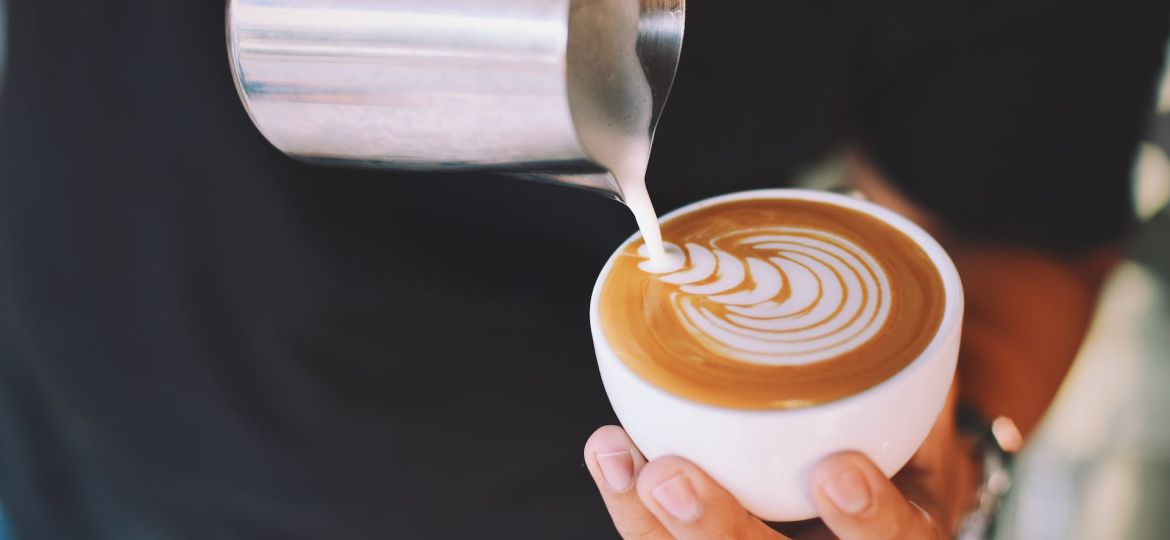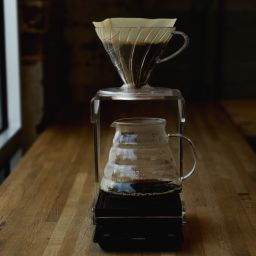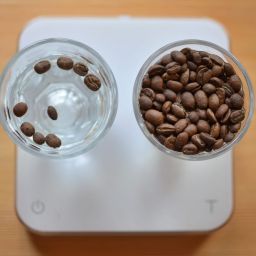
Essential Ingredients and Equipment
To craft the perfect cappuccino, you need more than just skill – the right ingredients and equipment are crucial. Here’s what you’ll need:
- Milk: Whole milk is traditionally used for its creaminess, but alternatives like almond milk work great for those seeking a dairy-free option.
- Coffee Grounds: The soul of the cappuccino, select high-quality coffee grounds for the best flavor.
- Water: The unsung hero, pure and clean water makes a noticeable difference.
And as for equipment:
- French Press: Not just for coffee! It’s excellent for frothing milk.
- Stovetop Espresso Maker: For that authentic espresso flavor.
- Stove: To heat your espresso maker.
- Microwave Oven: Handy for warming milk.
- Spoon: For stirring and layering.
- Mug(s): The canvas for your coffee creation.
Creating the perfect cappuccino is an art form, requiring precision and care. From the choice of milk to the type of coffee grounds, every element plays a crucial role.
When it comes to milk frothing, the technique is key. Whether you’re using a French press or a specialized frother, achieving that silky, creamy foam makes all the difference.
In the next part of our guide, we’ll walk you through the step-by-step process of making your cappuccino, ensuring you can enjoy a café-quality drink right in the comfort of your home.
Step-by-Step Guide to Making Cappuccino at Home
Ready to become your own barista? Making a cappuccino at home is easier than you think! Just follow these simple steps, and you’ll be sipping on a delicious, café-style cappuccino in no time.
Step One: Preparing the Espresso Maker
First things first, grab your stovetop espresso maker. This little gadget is going to be your best friend in making that rich, deep-flavored espresso base. Make sure it’s clean and ready to go!
Step Two: Adding Coffee Grounds
Now, let’s talk coffee grounds. You want them fine, fresh, and fabulous. Fill the basket of your espresso maker with your chosen grounds. Don’t pack them too tightly, just a gentle tamp will do. Remember, the quality of your coffee grounds is crucial here.
Step Three: Assembling and Heating the Espresso Maker
Fill the lower chamber of your espresso maker with water (just below the valve), then put the basket with the coffee grounds in place. Screw the top and bottom together tightly. Now, place it on the stove over medium heat.
Step Four: Monitoring the Espresso Brewing Process
Keep an eye on your espresso maker. You’ll hear it start to gurgle and see the coffee coming up into the top chamber. This is where the magic happens! Once it’s done, remove it from the heat. Patience is key here – don’t rush the brewing process.
Step Five: Preparing the Milk in the French Press
While your espresso is brewing, let’s get that milk ready. Pour your milk (whole or almond, your choice) into the French press. Fill it up to about one-third of the way. This will give you enough room to froth the milk.
Step Six: Heating the Milk
Pop the French press (without the plunger) into the microwave. Heat it for about 30-45 seconds, depending on your microwave. You want it warm, not boiling.
Step Seven: Frothing the Milk
Now, the fun part – frothing! Put the plunger back on the French press and pump it vigorously for about 15-20 seconds. You’re looking for smooth, velvety foam.
Step Eight: Finalizing the Espresso
Your espresso should be ready by now. Pour it into your favorite mug – fill it about halfway. The aroma of freshly brewed espresso is just heavenly, isn’t it?
Step Nine: Creating the Foam Layer
Take your frothed milk and gently spoon the foam on top of the espresso. Aim for a good balance between milk and foam – you want that classic cappuccino look and feel.
Step Ten: Combining Foam and Espresso
Finally, pour the remaining milk from the French press into the mug, letting it mix with the espresso. Then, top it off with a generous layer of foam. And voilà! You’ve just made a perfect cappuccino at home!
Remember, making a great cappuccino is all about practice. Don’t worry if it’s not perfect the first time. Experiment with different amounts of milk, coffee, and frothing times to find what works best for you. Enjoy your homemade cappuccino, and feel proud of your new barista skills!
Tips for Perfect Cappuccino
Making a cappuccino that tastes like it’s straight out of a quaint Italian café is all about nailing the basics. Here are some tips to help you elevate your cappuccino game:
Milk Selection and Frothing Techniques
- Milk Type: Whole milk is your go-to for that creamy, rich texture. But, if you’re dairy-free, almond milk can be a great alternative. Just remember, different milks froth differently.
- Frothing: Warm your milk to the right temperature – not too hot, not too cold. Use a thermometer if you need to. When frothing, aim for smooth, velvety foam. It’s all about the wrist action!
Coffee Ground Selection and Brewing Tips
- Grind Size: Use a fine grind for your espresso. It should feel like powdered sugar.
- Freshness: Freshly ground coffee beans make a world of difference. Grind your beans just before brewing if possible.
- Brewing: Don’t rush the brewing process. Let the espresso maker do its thing at a medium heat. Patience pays off here!
The perfect cappuccino is a balance of espresso, milk, and foam. Experiment with different coffee beans and milks to find your perfect match.
Common Mistakes to Avoid
Even the best of us can slip up when making cappuccino. Here are a couple of common pitfalls to watch out for:
- Overheating Milk: This is a big no-no. Overheated milk loses its sweetness and ruins the texture of your foam. Aim for around 150-155°F (65-68°C). If you don’t have a thermometer, heat it until it’s hot to the touch, but not scalding.
- Incorrect Coffee to Water Ratio: Too much water and your espresso will be weak; too little, and it’ll be overly strong. Follow the instructions for your espresso maker, and you’ll be golden.
Making a cappuccino is a bit like a dance – it takes practice to get it right. But once you do, it’s oh-so-satisfying. Keep these tips in mind, and you’ll be crafting café-quality cappuccinos in no time!
FAQs
Got questions about making cappuccinos? You’re not alone! Here are some answers to the most common queries:
How to Make Cappuccino Foam?
- French Press Method: If you don’t have a frother, use a French press. Heat your milk, pour it into the press, and pump the plunger until you get that creamy foam.
- Jar Shake Method: No French press? No problem! Pour warm milk into a jar, seal it tight, and shake vigorously. Then, microwave it for a few seconds to stabilize the foam.
Can I Make Cappuccino Without a Machine?
Absolutely! You can make espresso-like coffee with a Moka pot or even strong brewed coffee from a regular coffee maker. Combine it with your homemade foam, and you’ve got a machine-free cappuccino!
Differences Between Cappuccino and Other Coffee Types
- Cappuccino: Equal parts espresso, steamed milk, and foam.
- Latte: More steamed milk and less foam than a cappuccino.
- Americano: Espresso with added hot water, no milk.
- Mocha: Similar to a cappuccino but with chocolate syrup.
Each coffee type has its unique charm, but the cappuccino stands out with its perfect balance and texture.
Read more about Best Coffee Shops in Soho.
Conclusion
So there you have it, your guide to making the perfect homemade cappuccino! Remember:
- It’s all about balance – equal parts espresso, milk, and foam.
- Practice makes perfect. Don’t be discouraged if your first few attempts aren’t café-worthy.
- Experiment with different milks, coffee grounds, and frothing techniques to find your perfect cup.
Making cappuccinos at home is not just about the drink; it’s about the experience. So, have fun with it, and enjoy every sip of your delicious creation. Here’s to many delightful cappuccino moments ahead!
Read more about What is Bougie Coffee? Learn how to make it.









